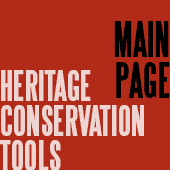- Heritage 101
- Advocacy
- Accessibility for Historic Places
- Climate & Sustainability
- Cultural Maps
- Heritage Place Conservation
- Heritage Policy & Legislation
- Homeowners
- Intangible Cultural Heritage
- Reconciliation
- Indigenous Cultural Heritage
- Setting the Bar: A Reconciliation Guide for Heritage
- 1. Heritage and Reconciliation Pledge
- 2. Acknowledging Land and People
- 3. Celebrating Days of Recognition and Commemoration
- 4. With a Commitment to Learn
- 5. Committing to Strategic Organizational Diversity
- 6. Mission-Making Room for Reconciliation
- 7. Possession, Interpretation, Repatriation and Cultural Care
- 8. Shared Decision Making
- 9. Statements of Significance and other heritage planning documents
- 10. Heritage Conservation Tools, Local Government Act
- Racism: Do Not Let the Forgetting Prevail
- Taking Action: resources for diversity and inclusion
- Webinars On-Demand
Other Conservation Tools: Heritage Impact Assessment
Introduction
A heritage impact assessment is information or a study which describes the impact that a proposed development may have on a protected property. The impact assessment provides a council or regional district board with important decision-making information, prior to issuing approvals, regarding the negative impact of a proposed development on a heritage resource.
A heritage impact assessment is undertaken to determine the potential impacts of a proposed development or site alteration on a heritage resource and recommended mitigation and conservation measures.
A council or regional district board may wish to request a heritage impact assessment in cases where it is considering a proposal that it believes may have a negative impact on:
- a designated property,
- a property included on a heritage conservation area schedule, or
- a property protected under the Heritage Conservation Act.
A heritage impact assessment should not be requested if the information generated will not affect the outcome of the decision-making process.
The Impacts
Negative impacts can include:
- Destruction of any, or part of any, significant heritage attributes or features;
- Alteration that is not sympathetic, or is incompatible, with the historic fabric and appearance;
- Shadows created that alter the appearance of a heritage attribute or change the viability of a natural feature or plantings, such as a garden;
- Isolation of a heritage attribute from its surrounding environment, context or a significant relationship;
- Direct or indirect obstruction of significant views or vistas within, from, or of built and natural features;
- A change in land use such as rezoning a battlefield from open space to residential use, allowing new development or site alteration to fill in the formerly open spaces;
- Land disturbances such as a change in grade that alters soils, and drainage patterns that adversely affect an archaeological resource.
The Objectives
The primary objectives of the impact assessment are to:
- evaluate and understand the heritage values and significance of the site;
- identify and evaluate heritage resources within the project area;
- identify and assess all impacts on heritage resources which might result from the project; and
- recommend conservation strategies and viable alternatives for managing unavoidable adverse impacts on character-defining elements, including a preliminary program for implementing and scheduling impact management actions and, where necessary, conducting surveillance and/or monitoring.
The Process
The heritage assessment process is composed of two principal components: assessment of heritage values and resources and impact management. Assessment is primarily concerned with understanding the historic place and the evaluation and inventory of heritage values and resources located on the site, and the assessment of impacts that might ensue from the development proposed.
Impact management follows directly from assessment and is primarily concerned with managing unavoidable adverse impacts as well as unanticipated impacts. It is important to recognize that the assessment and impact management stages are approached sequentially, and that impact mitigation recommendations are highly dependent upon results and recommendations made in the evaluation and inventory stage. The success of this process is also dependent upon effective communication and cooperation between project proponents and the Heritage Branch, and their mutual respect for development and heritage resource management objectives.
- An applicant (who may be a property owner or developer) applies for a building permit, development permit, licence, or other approval.
- Local government or its delegate determines whether the proposal may affect a designated property, property within a heritage conservation area, or a property protected under the Heritage Conservation Act.
- Prior to further consideration of the application, local government or its delegate may require the applicant to provide information with respect to the impact of the proposal. Alternatively, the local government may prepare the impact assessment at its own expense.
- If the local government or delegate requires the property owner to submit a heritage impact assessment the local government must make the request in writing. The request must include specifications for the information to be provided and the required qualifications of any persons undertaking the assessment. Once these specifications are communicated to the applicant, they may not be changed without the applicant’s consent.
- The applicant or local government engages a qualifies person(s) to complete the heritage impact assessment. Upon completion, the applicant must submit the study to the local government.
The heritage impact assessment can include:
- Research, analysis, evaluation
- Description of proposed development or site alterations; Site boundaries
- Measurement of Development or Site Alteration Impact
- Preparation of a historical review;
- Consultation with stakeholders;
- Identification of significance, heritage attributes, and character-defining elements;
- Description of proposed project impacts; the number, kinds and cumulative effects of impacts;
- Consideration of alternatives, mitigation, and conservation methods;
- Development of a conservation or mitigation strategy;
- Implementation and monitoring;
- Summary statement and conservation recommendations and strategies;
- Recommendations for next steps.
An Example
A local government receives a building permit application for a commercially zoned property in its downtown. The proposed development will require extensive blasting and excavation of the site. The congregation of an adjacent designated church becomes aware of the proposed development and expresses concern to the council that the blasting and excavation work may negatively impact the stability of the church’s rubble foundation and the integrity of the stained-glass window. The congregation is also concerned that shadows cast by the proposed high-rise tower would increase dampness in the church structure and may negatively impact the historic church garden. Council orders the property owner of the proposed development to prepare and submit an impact assessment that addresses the concerns raised by the church congregation.
_______________________________________________________
The Legislation
(Local Government Act, Heritage Conservation, Division 3 — Heritage Review S. 602, source)
Impact assessment may be required
602
- If, in the opinion of the local government or its delegate, an approval may affect protected heritage property, the local government or delegate may require the applicant for the approval, before the approval is issued,
a) to provide the local government or delegate, at the expense of the applicant, with information regarding the possible effects that the activity or action enabled by the approval may have on the heritage property, or
b) to permit the local government or delegate to undertake, at the expense of the local government, studies regarding the matters referred to in paragraph (a) provided that those studies are undertaken promptly.
2. A requirement under subsection (1) must be communicated to the applicant in writing and include specifications of the information to be provided and of the qualifications of any persons undertaking studies to produce the information.
3. Specifications referred to in subsection (2) must not be changed by the local government or its delegate without the agreement of the applicant.
Sources here, here, here and here.

